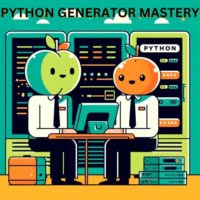Programming / Coding
17 Jun 2024
Python sum(): How to Get the Sum of Python List Elements

Aggregating and formatting Data has been on the forefront of our automation projects at IOFLOOD, and during this we have gotten familiar with the process of summing elements in Python lists. This simple process helps in calculating total values, for efficient data analysis. To aid our customers that are wanting to improve their data aggregation
17 Jun 2024
Python Flatten List | How To Flatten Nested Lists in Python

Handling nested lists consistently is a challenge we faced when automating processes at IOFLOOD. We have found the best way to simplify nested data in Python is with list flattening, which converts nested lists into a single-level list. In this article, we explore various useful methods for flattening lists in Python, sharing our best practices
17 Jun 2024
Learn Python: How To Loop Through a List

Looping through a list is a Python technique we use often when developing software for use at IOFLOOD. In our experience, looping through lists provides a structured way to process each element in a list. Today’s article explains how to loop through a list in Python, providing valuable insights and examples to help our dedicated
12 Jun 2024
Python List Comprehension | Usage Guide (With Examples)
At IOFLOOD, Python list comprehension is frequently used while developing scripts for data transformation and analysis. List comprehensions provide an efficient way to generate and filter lists, making them highly suitable for complex data tasks. This article aims to guide our customers and fellow developers on effectively utilizing Python list comprehension, offering valuable tips and
12 Jun 2024
Python List Methods: Guide (With Examples)
As we work on improving our data processing scripts at IOFLOOD, we have utilized various Python list methods as they allow for various operations such as appending, removing, and searching items. Python list methods offer a comprehensive set of tools to handle list operations efficiently and should be known by any Python Programmer. Today’s article
12 Jun 2024
Python Lists Unleashed: A Comprehensive Guide

When managing data on Python scripts at IOFLOOD, we frequently use lists to store and manipulate collections. Lists offer significant advantages, such as dynamic resizing and easy indexing, which make them ideal for various programming scenarios. Today’s article tackles what a list in Python is and how to use it effectively, providing our customers with
12 Jun 2024
Python List .extend() Method Guide | Uses and Examples

When we develop automated processes for data management, we at IOFLOOD like to use Python’s list.extend() method to append multiple elements to lists. This method offers significant advantages by allowing bulk additions to lists in a single operation. Today’s article delves into what the list.extend() method is and how to use it effectively, providing practical
06 Jun 2024
Python next() Function Guide (With Examples)

Using the next() function in Python programming is crucial while automating tasks at IOFLOOD, as it allows sequential access to elements in an iterator. In our experience, the next() function streamlines data traversal and facilitates efficient iteration, particularly with complex data structures. Today’s article explores how to effectively use the next() function in Python, providing
06 Jun 2024
Python Generator Mastery: In-Depth Guide

Understanding Python generators is essential while programming on Linux servers at IOFLOOD, as it assists with efficient memory management and iterable generation. In our experience, Python generators offer a memory-efficient approach to data generation. In today’s article, we explore what Python generators are, how they differ from regular functions, and how to use them effectively
06 Jun 2024
Python Do-While Loop: Ultimate How-To Guide

Implementing a do-while loop in Python programming is crucial while programming at IOFLOOD, ensuring at least one execution of a code block before checking the loop condition. In our experience, do-while loops offer a robust solution for handling iterative tasks effectively. In today’s article, we dive into how to create a do-while loop in Python,